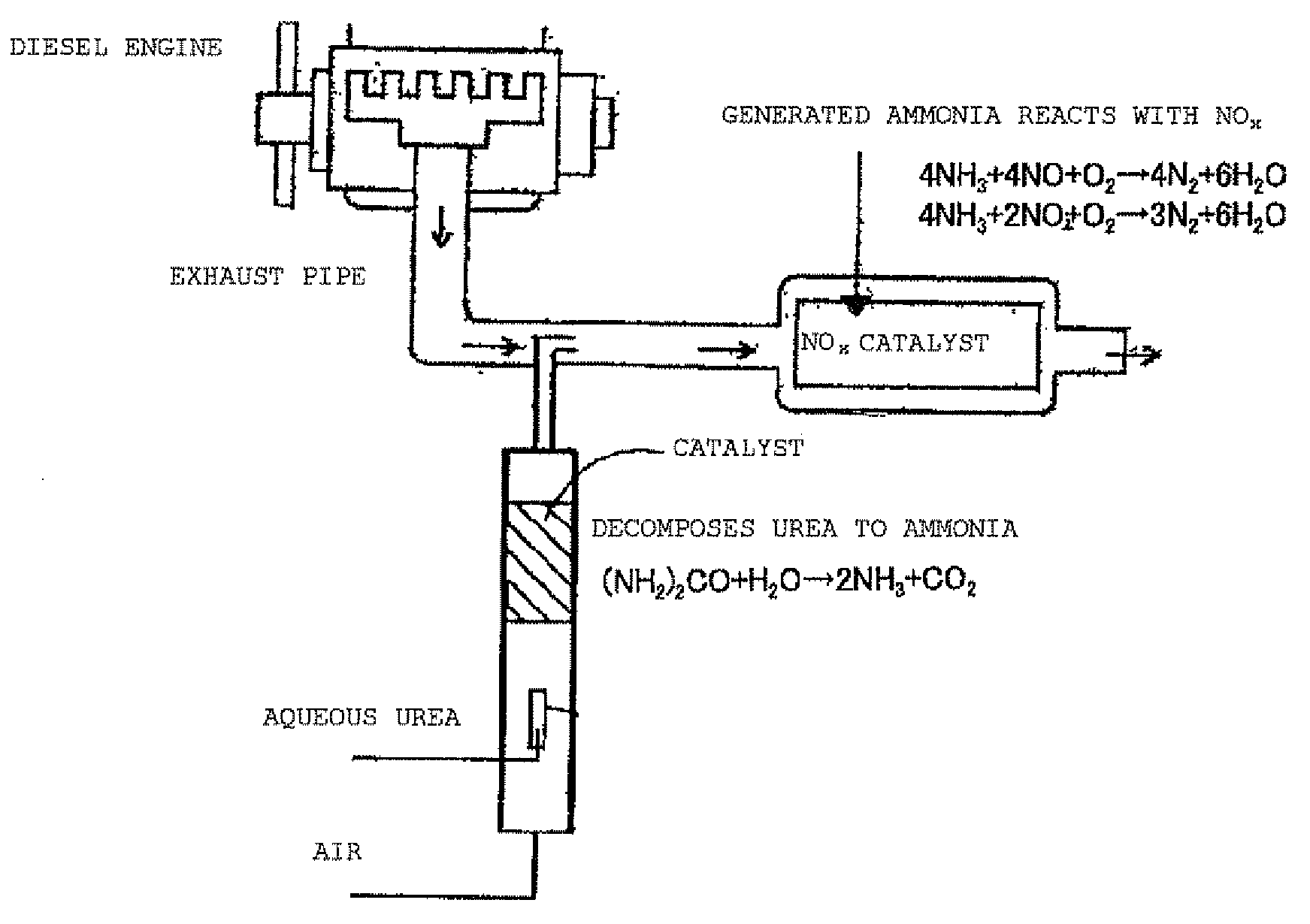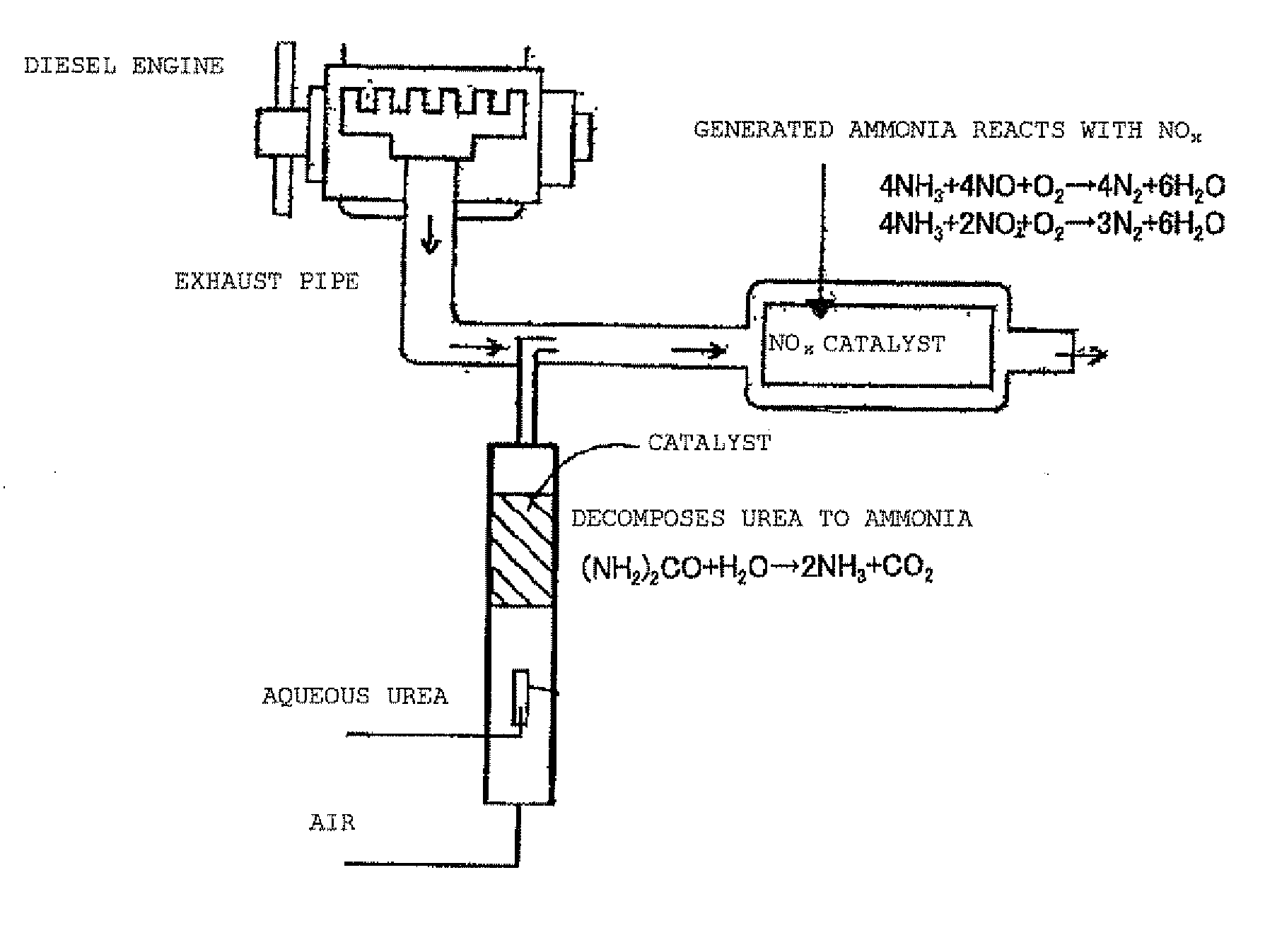Exhaust Gas Treatment Apparatus
a gas treatment apparatus and exhaust gas technology, applied in lighting and heating apparatus, physical/chemical process catalysts, separation processes, etc., can solve the problems of difficult to use the resulting gas diffusion electrode directly for high-temperature catalytic reaction, adsorption, separation, etc., and achieve high urea hydrolysis activity, selectively reduce and remove nox in an exhaust gas.
- Summary
- Abstract
- Description
- Claims
- Application Information
AI Technical Summary
Benefits of technology
Problems solved by technology
Method used
Image
Examples
first embodiment
Zeolite Catalyst
[0038]In the first embodiment, a zeolite catalyst is used as the urea decomposition catalyst.
[0039]As the zeolite used in the zeolite catalyst, a known synthetic zeolite or natural zeolite can be used. Zeolites are usually crystalline aluminosilicates in the narrow sense, but are not limited thereto. A crystalline aluminosilicate phosphate (SAPO), crystalline aluminophosphate (ALPO), crystalline titanosilicate (TS), or the like can also be used.
[0040]The zeolite used in the present invention is preferably at least one selected from ZSM-5-type zeolite, mordenite-type zeolite, faujasite-type zeolite, A-type zeolite, L-type zeolite, and β zeolite. These zeolites have excellent urea decomposition activity.
[0041]The average particle diameter of the zeolite particles is preferably in a range of 0.01 to 10 μm, and more preferably in a range of 0.02 to 5 μm. It is difficult to obtain a zeolite having an average particle diameter lower than the range described above, a...
second embodiment
Catalyst Having Adhered Metal Oxide Particulates
[0102]In the second embodiment of the present invention, a honeycomb catalyst or a membranous catalyst in which metal oxide particulates adhere to the surface of a conductive honeycomb substrate or netlike support is used.
[0103]As the metal oxide particulates used in the present invention, metal oxide particulates composed of at least one element selected from the group consisting of group IA, group IIA, group IIIA, group IVA, group VA, group VIA, group VIIA, group IB, group IIB, group IIIB, group IVB, group VB, and group VIII elements is suitably used. Specific examples thereof include metal oxide particulates (including composite metal oxide particulates) composed of a metal oxide of at least one element selected from the group consisting of Na, Mg, Ca, Ba, La, Ce, Ti, Zr, V, Nb, Cr, Mo, W, Mn, Zn, Al, Si, P, Sb, Cu, Fe, Ru, Co, and Re.
[0104]In particular, preferably, the metal oxide particulates are composed ...
examples
[0127]The present invention will be described on the basis of examples below. However, it is to be understood that the present invention is not limited thereto.
PUM
| Property | Measurement | Unit |
|---|---|---|
| particle diameter | aaaaa | aaaaa |
| particle diameter | aaaaa | aaaaa |
| diameter | aaaaa | aaaaa |
Abstract
Description
Claims
Application Information
 Login to View More
Login to View More - R&D
- Intellectual Property
- Life Sciences
- Materials
- Tech Scout
- Unparalleled Data Quality
- Higher Quality Content
- 60% Fewer Hallucinations
Browse by: Latest US Patents, China's latest patents, Technical Efficacy Thesaurus, Application Domain, Technology Topic, Popular Technical Reports.
© 2025 PatSnap. All rights reserved.Legal|Privacy policy|Modern Slavery Act Transparency Statement|Sitemap|About US| Contact US: help@patsnap.com


